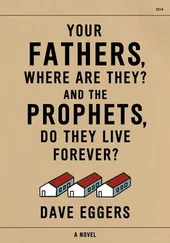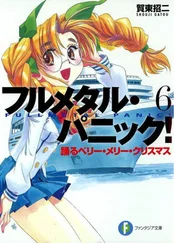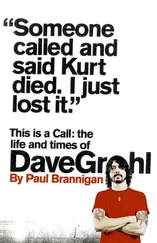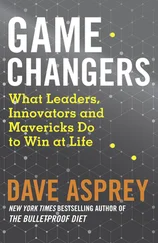Again, during both shows, we played mostly covers. This time, though, we did two of my compositions, “Jump in the Fire” and “Metal Militia.” Although we were tighter and made fewer mistakes than in Anaheim, we certainly weren’t perfect. I recall taking the mike from James again and generally flailing all over the stage while playing guitar. In the days that followed, we generated considerable buzz, although the mainstream rock press was not initially impressed. Indeed, our first review was a stinging jab directed at almost everything about Metallica.
With one notable exception.
“Saxon could also use a fast, hot guitar player of the Eddie Van Halen ilk. Opening quartet Metallica had one, but little else. The local group needs considerable development to overcome a pervasive awkwardness.”
Ouch!
I don’t recall taking any pleasure in being singled out as the one bright spot in an otherwise forgettable show. (I’m sure I stood up in defense of my bandmates.) We experienced growing pains no different from those endured by all great bands. The truth is, we were doing something radical. We were fast and loud and dangerous, on the cutting edge of heavy metal. Practically speaking, thrash began with early Metallica, in both form and attitude.
The next few months brought a kaleidoscopic blur of rehearsing, writing, performing, and partying. Everything happened so fast. There was a four-track demo (commonly referred to as The Power Demo in Metallica lore) that we recorded in Ron McGovney’s garage. That tape included two of my songs, “Jump in the Fire” and “The Mechanix,” along with “Hit the Lights” and “Motorbreath,” which was credited to James (although I believe in its nascent stage it belonged at least in part to James’s former Leather Charm bandmate Hugh Tanner).
I’m not sure how we managed to accomplish as much as we did, given the lifestyle we were leading—all that fucking and fighting, drugging and drinking and vomiting. But we did. Our repertoire expanded, our performances improved. Very quickly we realized that in order to achieve the heaviness we wanted, we needed another guitar player. Since James still wasn’t interested in anything other than singing, we recruited a guy named Brad Parker. The first day of rehearsal he showed up wearing a striped shirt with high French cut sleeves—the kind you might see on a Russian sailor. He wore eyeliner and a white feathered earring. I took one look at this guy and started laughing.
Dude, if you last a day in this band, I’ll be shocked, I thought.
He actually lasted a few days—maybe weeks—but not long enough to matter. He played one show with us, at a place called the Music Factory in Costa Mesa. Before we took the stage, he turned to me and said, “Listen, while we’re out there, call me Damien, okay?”
“What?”
“Damien…Damien Phillips,” he said.
“Who the fuck is Damien Phillips?”
He smiled.
“I am. It’s my stage name.”
That was the first and only time Brad Parker and/or Damien Phillips played with Metallica. Our next gig was one month later, shortly before Memorial Day 1982, with James playing rhythm guitar and singing lead. By this time we had dispensed with the poseurs and the endless search for another guitar player and simply decided to encourage James to handle the job himself; he turned out, of course, to be a formidable player.
Throughout the summer our schedule intensified, and so did our reputation. We played at least one gig a week at various venues around Southern California: the Troubadour and Whisky in Hollywood, the Woodstock in Anaheim, any number of smaller parties and concerts at places you’ve never heard of. The first version of Metal Massacre was released in June, and within a month we found ourselves in a studio, working with a record company executive by the name of Kenny Kane. This guy owned a punk label and apparently had gotten the impression that Metallica would somehow appeal to the label’s demographic, so he offered us a chance to record an EP. When he heard the tapes, well, I guess he wasn’t thrilled, since (obviously) Metallica was not a punk band. He withdrew the offer and we kept the tapes. The resulting demo, titled No Life Till Leather, consisted of seven songs: “Hit the Lights,” “Mechanix,” “Phantom Lord,” “Jump in the Fire,” “Motorbreath,” “Seek and Destroy,” and “Metal Militia.”
I was the primary writer on four of those songs: “Mechanix,” “Phantom Lord,” “Jump in the Fire,” and “Metal Militia.” Without meaning to sound bitter, it’s important to note that this demo, which provided the spark for the underground phenomenon that Metallica became, stands as a rather indisputable piece of evidence in the war between those who think my contributions to the band were significant (Megadeth fans, mainly) and those who don’t (Metallica fans). When Metallica released its first album, in 1983, all four of those songs were included (although “Mechanix” had been reworked and given a new title, “The Four Horsemen,” I still received a writing credit).
No Life Till Leather became our calling card, and we used it to build an audience from L.A. to San Francisco. We had no formal contract, no means of distributing songs, but that was far from an insurmountable obstacle. Tapes were copied and passed around, and pretty soon we were playing in front of fans who knew the words to our songs, which I have to tell you is about as thrilling a thing as a young rock star can experience. We were getting better and we knew it.
We also were completely out of control. I will never deny that I was a handful in those days. I was aggressive, driven, and unpredictable, and I drank way too much. But so did everyone else in the band. We practically lived in our cars, driving up and down the coast, drinking before and after rehearsals and gigs. It wasn’t unusual for one or more members of the band to pass out during those trips and wake up to discover that his face or body had been painted. We shared homes, money, equipment, drugs, alcohol, girls. It was a life of utter decadence (and at times one hell of a lot of fun). For all of us.
The difference, and I suppose it is an important distinction, is that we were different types of drunks. I was often an angry, hostile drunk; Lars and James were happy drunks. Harmless, for the most part, although their antics were juvenile.
As word of No Life Till Leather spread, so too did our reputation. We found ourselves spending increasing amounts of time on the road, driving up and down the coast between L.A. and San Francisco. Invariably, those trips became exercises in humiliation. On every trip, it seemed like someone’s shoes would be tossed out the back of our truck, just so Lars or James could watch them get pissed off. If they had treated me that way, I would have left.
Admittedly, the person I was onstage—pissed off, trying to play my guitar so fast that it would nearly burn my fingers—was not far from who I was off the stage. When I drank, I would often get combative. I didn’t always go looking for a fight, but I certainly never walked away from one. Even when it involved my friends and bandmates.
Prior to the formation of Metallica, I’d bought a couple dogs to dissuade people from breaking into my house (which had happened on occasion, in part because of my “business” interests). These were formidable pups—Staffordshire terriers (which are similar to pit bulls) cross-bred with Rhodesian ridgebacks—and they quite naturally scared the shit out of most people. But they were also very affectionate and loyal, and I cared for them immensely. When I traveled to Ron’s house for rehearsal, or to a gig, I’d usually leave them behind to protect the house. Sometimes, though, one of the dogs would keep me company. One day in the summer of 1982, I drove to rehearsal, and when I let the dog out of the car she began running around. Dogs do that when they’ve been cooped up for a while. At some point the female jumped up on the front quarter panel of Ron’s car, a beautiful Pontiac GTO, prompting James to give the dog a hard kick across its chest. The dog (she was still just a puppy) let out a yelp and scampered away.
Читать дальше







